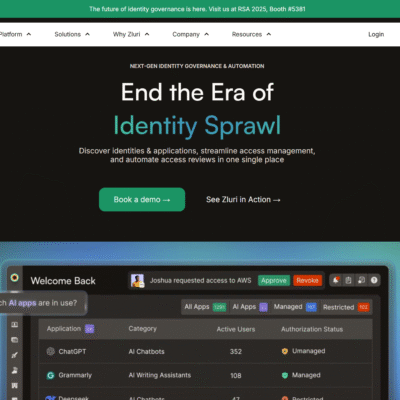The Gist of the Modern Data Landscape
In recent years, the debate surrounding Customer Data Platforms (CDPs) has gained considerable traction. Once seen as the linchpin of customer data strategy, CDPs are facing challenges from evolving enterprise architectures, increasing data volumes, and mounting privacy regulations. Are these traditional platforms still primed to cater to modern business needs? Or has the focus shifted toward more flexible, composable, and cloud-native approaches? This article dives into the intricacies of this changing landscape, illuminating the future of customer data management.
The Changing Customer Data Landscape
For the past decade, CDPs were lauded for offering a unified “single source of truth”. They enabled brands to dissolve data silos and enhance customer experiences through precise personalization and targeted campaigns. However, the speed of change in technology—and consumer behavior—has prompted organizations to reconsider whether a single platform can effectively manage the complexities of contemporary customer journeys.
The Evolving Role of CDPs
Christian Monberg, CTO at Zeta Global, posits that this evolution is not the end of CDPs but rather a transformation. The future will see generative, agentic systems where CDPs serve as coordination layers that integrate identity, policy, and real-time intelligence throughout the data ecosystem. This evolution aligns with an increasing demand for agility and speed in digital marketing.
Key Questions Surrounding CDP Evolution
- Are CDPs becoming obsolete?
- How is AI steering customer data strategies?
- What are composable customer data stacks?
- What factors should businesses weigh when choosing a 2025 data strategy?
The Case for CDPs — Then and Now
Customer Data Platforms emerged in response to fragmented data scattered across various systems. Their ability to unify data into actionable profiles has powered personalized marketing efforts and helped businesses orchestrate complex customer journeys.
However, as data sources proliferate, the reliance on a centralized “truth” is undergoing scrutiny. While CDPs remain invaluable for identity resolution and consent management—particularly in regulated industries—businesses are exploring new architectures for greater flexibility and governance.
New Challengers: Warehouse-Native, Composable, and Zero-Copy Architectures
Cloud adoption is pushing businesses toward innovative data management approaches. Warehouse-native architectures, utilizing platforms such as Snowflake and BigQuery, allow for real-time analytics and machine learning without duplicating data. Composable stacks—built from modular, API-driven components—offer immense flexibility, allowing businesses to tailor their data strategies.
| The Distinctions Among Data Strategies | Approach | Core Strength | Best For | Limitations |
|---|---|---|---|---|
| Traditional CDP | Unified profiles, marketing activation | Fast implementation, breaking silos | Limited analytics, potential data duplication | |
| Warehouse-Native CDP | Operates directly on cloud warehouse data | Custom analytics, advanced personalization | Complex setup, requires engineering expertise | |
| Composable Stack | Modular tools, API-first integration | High agility, specific needs | Integration complexity | |
| Zero-Copy CDP | Activates directly from warehouse; no duplication | Compliance-driven organizations | Emerging technology, tools still maturing |
AI and Privacy: Forces Accelerating Change
As businesses confront stricter global privacy regulations, the integration of AI into customer data strategies is becoming vital. The next generation of CDPs will embed AI at multiple levels, bridging gaps in marketing infrastructure while ensuring user privacy. This transition pushes for innovations such as agentic AI, capable of operating seamlessly across applications and user data.
Privacy Regulations and Data Residency
New regulations, including GDPR and CCPA, complicate the landscape for businesses. These rules necessitate a deep understanding of where data resides and how it’s used. Consequently, organizations are drawn to architectures that minimize unnecessary data movement, thus aligning with compliance demands.
Hybrid Models and “CDP-Plus” Approaches
The reality for many organizations today involves adopting hybrid models where traditional and modern architectures coexist. By layering warehouse-native tools on top of existing CDPs, businesses can improve their data management capabilities while retaining the actionable insights offered by CDPs.
Vendor Convergence: CDP + Activation + Analytics
The rapid evolution of vendor offerings is leading to integrated “CDP-plus” platforms. By combining advanced analytics, data activation, and omnichannel execution, these solutions promise businesses a cohesive view of their customer data, despite the underlying complexity of their architectures.
Decision Points for 2025
As you contemplate your customer data strategy for 2025, weighing the merits of traditional CDPs versus modern, flexible approaches is crucial. Whether opting for a classic CDP, a warehouse-native solution, or a hybrid model, understanding your business goals and data maturity will shape your decision.
In an era of change, agility, compliance, and AI-driven insights will define the success of customer data strategies in the years to come. The future is not about choosing one path but rather finding a balanced approach that aligns with overarching business aims.





